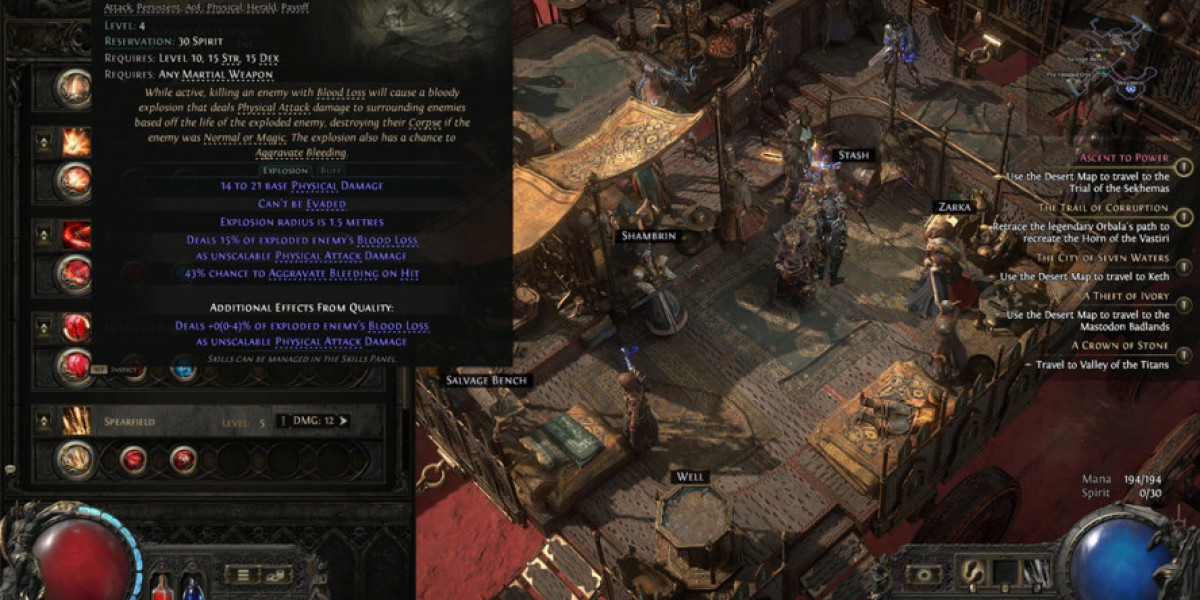Keeping the Purrfect Passage Open: A Guide to Cat Door Maintenance
Cat doors, likewise understood as pet doors or cat flaps, are a fantastic addition to any home with feline buddies. They provide cats the liberty to explore the outdoors (or designated locations within the home) and alleviate themselves, all while offering owners peace of mind and reducing the number of impromptu door-opening demands. Nevertheless, like any other feature of a house, cat doors are not unsusceptible to wear and tear. Regular maintenance is necessary to ensure they continue to operate properly, remain protected, and offer a comfortable and safe passage for your cherished cat. Ignoring maintenance can result in a host of problems, ranging from a stiff and loud flap to a total breakdown, possibly locking your cat out or, worse, compromising your home's security.

This article will dig into the importance of cat door maintenance, describing the needed actions to keep your pet's access point in prime condition. By comprehending the simple upkeep needed, you can extend the life expectancy of your cat door, guarantee your cat's ongoing freedom, and avoid pricey repairs or replacements down the line.
Why Regular Cat Door Maintenance Matters
Preserving your cat door is more than just a cosmetic task; it's a financial investment in the performance, security, and durability of the feature, as well as the comfort and well-being of your cat. Here are some key reasons why routine maintenance is vital:
- Ensures Smooth Operation: Dust, particles, and weather condition components can collect around the hinges and flap of a cat door, causing it to end up being stiff, sticky, or noisy when opening and closing. Routine cleansing and lubrication avoid these issues, ensuring the door operates efficiently and silently, motivating your cat to utilize it without doubt.
- Extends the Lifespan of the Door: Like any mechanical part, cat doors are subject to use and tear. Neglecting maintenance can accelerate this process, leading to early damage and the need for replacement. Regular cleansing, lubrication, and dealing with minor problems immediately can substantially extend the lifespan of your cat door, conserving you money in the long run.
- Maintains Security: A properly functioning cat door ought to close securely after your cat travels through. Damaged or improperly preserved doors may not close totally, possibly compromising your home's security by leaving gaps that might be exploited by burglars or permit drafts and insects to enter. For electronic or microchip-operated doors, consistent maintenance makes sure the locking mechanisms and sensors work reliably, keeping controlled access.
- Prevents Drafts and Energy Loss: A badly preserved cat door can end up being a significant source of drafts, specifically in colder climates. Gaps around the flap or frame due to damage or debris can let cold air in and warm air out, increasing your energy costs. Correct sealing and weather condition stripping maintenance is necessary to keep energy performance.
- Promotes Hygiene: Cat doors are exposed to the aspects and can build up dirt, mud, and even insect invasions in time. Routine cleaning assists maintain a sanitary passage for your Cat Flap Installers Nearby and avoids the transfer of dirt and bacteria into your home.
- Minimizes Noise: A disregarded cat door can end up being noisy, specifically in windy conditions. Squeaking hinges or a rattling flap can be disruptive to both you and your cat. Lubrication and tightening up of loose parts can substantially minimize noise levels.
- Early Detection of Problems: Routine maintenance enables you to check your cat door closely and identify any possible concerns early on, such as cracks, loose screws, or malfunctioning elements. Resolving these minor problems promptly can prevent them from escalating into more substantial and costly repair work.
Kinds Of Cat Doors and Maintenance Considerations
While the fundamental maintenance principles use across the majority of cat doors, different types might have particular requirements. Here's a quick overview of typical cat door types and maintenance considerations:
- Basic Flap Doors: These are the most basic and most common type. Maintenance primarily includes cleaning the flap and frame, lubing hinges, and looking for damage to the flap material (plastic, rubber, or flexible polymer).
- Magnetic Cat Doors: These doors use a magnetic collar key to permit entry just to cats wearing the secret. Maintenance includes the same tasks as basic flap doors, plus guaranteeing the magnetic system is clean and devoid of debris. Also, examine the collar key's magnet is still functional.
- Microchip Cat Doors: These doors utilize a microchip scanner to recognize your cat's implanted microchip, using selective entry. Maintenance consists of cleansing, looking for damage, and sometimes replacing batteries if it is battery-powered. The scanner lens ought to be kept clean for trustworthy chip detection.
- Electronic Cat Doors: These doors may utilize infrared or radio frequency (RFID) technology for selective entry, typically with sophisticated functions like curfew settings. Maintenance includes cleaning, looking for damage, battery replacement (if suitable), and periodically recalibrating or reprogramming the electronic elements according to the maker's directions.
Necessary Cat Door Maintenance Tasks: A Step-by-Step Guide
Developing a regular maintenance schedule will keep your cat door working efficiently. Here's a breakdown of typical maintenance tasks:
1. Regular Cleaning (Weekly/Bi-weekly):
- Gather Supplies: You will require:
- Mild soap or detergent
- Warm water
- Soft fabric or sponge
- Paper towels or a tidy, dry fabric
- (Optional) Disinfectant wipes (pet-safe)
- Wipe Down the Flap: Use a wet cloth or sponge with soapy water to clean up both sides of the flap. Eliminate any dirt, mud, fur, or insect residue.
- Clean the Frame: Clean the entire frame of the cat door, both inside and out. Focus on corners and crevices where dirt can build up.
- Dry Thoroughly: Ensure all parts are entirely dry to avoid mildew or rust.
- Disinfect (Optional): If preferred, use pet-safe disinfectant wipes to sterilize the door and frame, particularly if you have several cats or desire to maintain extra health.
2. Lubrication (Monthly/As Needed):
- Identify Hinges and Moving Parts: Locate the hinges, rotates, or any other moving parts of the cat door mechanism.
- Apply Lubricant: Use a silicone-based lubricant spray or a dry lubricant (like graphite powder) particularly created for hinges and moving parts. Avoid oil-based lubricants, as they can draw in dust and become sticky with time. Apply moderately to avoid drips.
- Work the Door: Open and close the cat door flap a number of times to disperse the lubricant evenly and ensure smooth, quiet operation. Clean away any excess lube.
3. Assessment and Repair (Monthly/Seasonally):
- Check for Damage: Carefully check the flap for fractures, tears, or warping. Try to find damage to the frame, weather removing, or any locking mechanisms.
- Tighten Up Loose Screws: Check all screws securing the door frame to the door or wall and tighten any that are loose. Loose screws can result in instability and drafts.
- Check Weather Stripping: Examine the weather stripping around the flap and frame for damage, fractures, or spaces. Change damaged weather condition stripping to preserve a good seal and avoid drafts.
- Battery Check (Electronic/Microchip Doors): If your door is battery-operated, check the battery level frequently and change batteries according to the maker's recommendations. Low batteries can trigger malfunctions and unreliable operation.
- Sensing Unit Cleaning (Microchip/Electronic Doors): Gently clean the sensor lens with a soft, dry fabric to guarantee accurate chip or key detection.
4. Seasonal Maintenance:
- Winter:
- Check for ice buildup around the flap and frame. Carefully remove ice to avoid damage and guarantee smooth operation.
- Guarantee weather stripping is in excellent condition to prevent drafts and cold air entry.
- Summertime:
- Check for insect nests or invasions around the cat door. Clean away any nests and think about using pet-safe insect repellent around the door frame.
- Make sure correct ventilation around the door opening to prevent humidity accumulation and possible mildew development.
Tools and Supplies for Cat Door Maintenance
Keeping a small package of maintenance tools and materials useful will make regular upkeep simpler and more effective. Think about assembling the following:
- Soft fabrics and sponges
- Mild soap or cleaning agent
- Silicone lubricant spray or dry lube
- Screwdriver (Phillips and flathead)
- Pet-safe disinfectant wipes (optional)
- Replacement weather stripping (if required)
- Small brush for cleaning up crevices
- Paper towels
- Replacement batteries (if appropriate)
DIY vs. Professional Help
A lot of regular cat door maintenance jobs are uncomplicated and can be quickly dealt with by homeowners. However, there are circumstances where looking for professional assistance might be suggested:
- Significant Damage: If you discover substantial damage to the door frame, flap, or locking mechanisms, professional repair or replacement may be required.
- Electronic Malfunctions: Troubleshooting electronic or microchip door malfunctions can be intricate. If you are uncertain how to identify or repair electronic concerns, speak with a professional installer or a certified cat flap installer technician.
- Installation Issues: If you are experiencing persistent issues after installing a brand-new cat door, it might be due to installation errors. A professional installer can examine the circumstance and rectify any concerns.
Regular cat door maintenance is a simple yet crucial element of responsible pet ownership for those who pick to offer their feline pals with this flexibility. By dedicating a percentage of time to cleaning, lubricating, and inspecting your cat door, you can ensure its ongoing smooth operation, durability, security, and health. A well-maintained cat door provides your cat with constant access to the outside world (or designated indoor cat door installation locations), contributing to their happiness and well-being, while also offering peace of mind for you. Taking proactive steps to look after your cat door will keep the purrfect passage open for many years to come.
Frequently Asked Questions about Cat Door Maintenance
Q: How frequently should I clean my cat door?
A: Aim to clean your cat door weekly or bi-weekly for basic flap doors. For electronic or microchip doors that may accumulate more dirt around the sensing unit locations, weekly cleansing is recommended.
Q: What kind of lubricant should I use on my cat door hinges?
A: Silicone-based lube spray or dry lubricant (like graphite powder) is recommended. Avoid oil-based lubes as they can bring in dust and become sticky.
Q: How do I clean up a microchip cat door sensor?
A: Use a soft, dry cloth to gently wipe the sensor lens. Prevent using liquids or abrasive cleaners, as they could damage the sensing unit.
Q: My same-day cat flap installation door flap is sticking. What should I do?
A: First, tidy the flap and frame completely. Then, apply a percentage of lubricant to the hinges and moving parts. If the sticking continues, look for any damage to the flap or frame and consider tightening up screws or changing the door alignment.
Q: How do I understand when to replace the batteries in my electronic cat door?
A: Electronic cat doors generally have a low battery indicator light or warning signal. Describe your door's manual for particular directions on battery replacement. It's a great practice to change batteries proactively, perhaps every 6-12 months depending upon use and battery type.
Q: Can I use home cleaners to clean my cat door?
A: Yes, you can use moderate soap or detergent watered down in warm water. Avoid severe chemicals or abrasive cleaners that could harm the door material. Make sure any cleansing products are pet-safe.
Q: My cat door is allowing drafts. How can I repair this?
A: Inspect the weather removing around the flap and frame. Change any damaged or worn weather stripping. Guarantee the door frame is safely installed and tighten up any loose screws. You can also consider including additional weather condition stripping or a draft excluder particularly created for pet doors.







